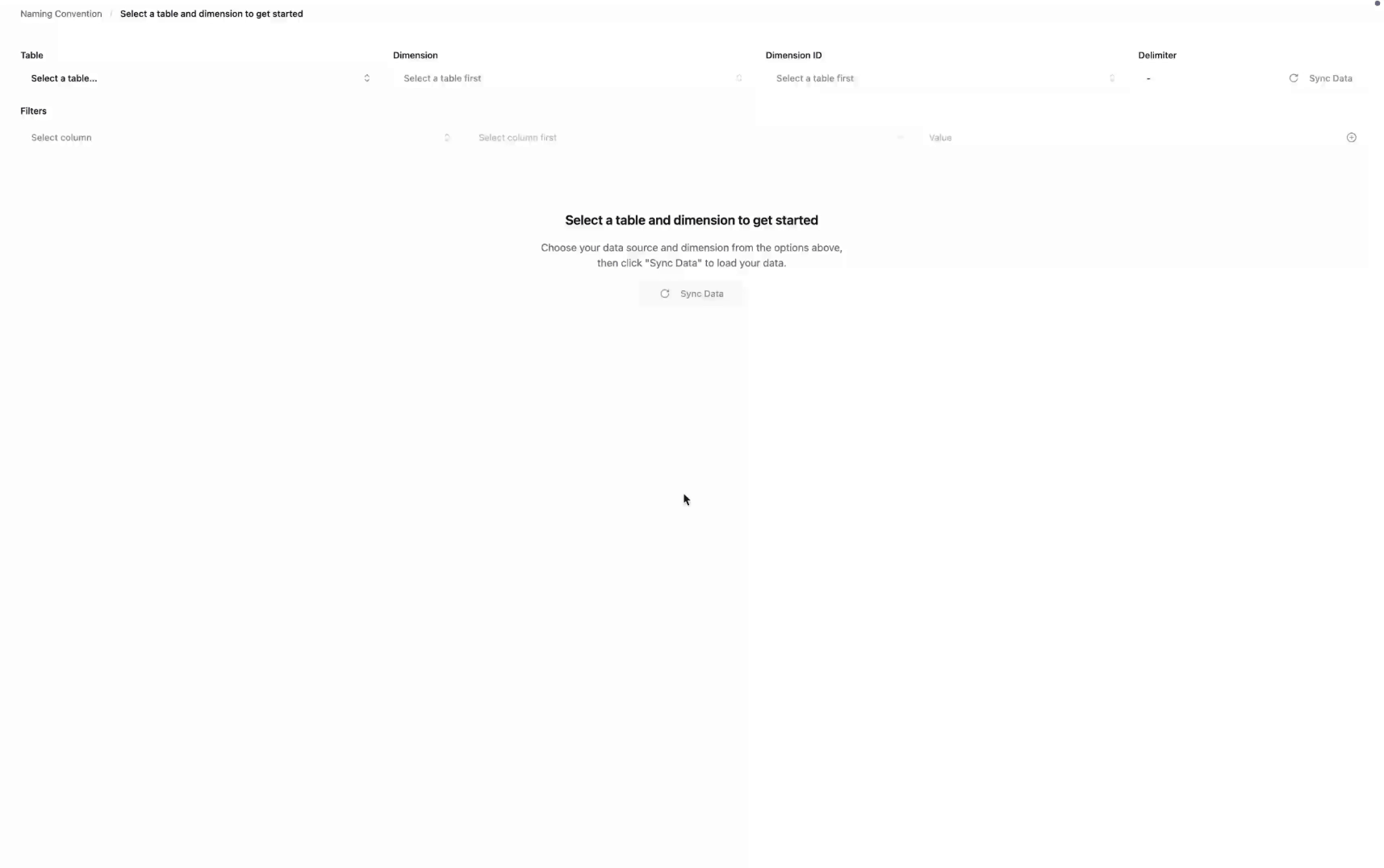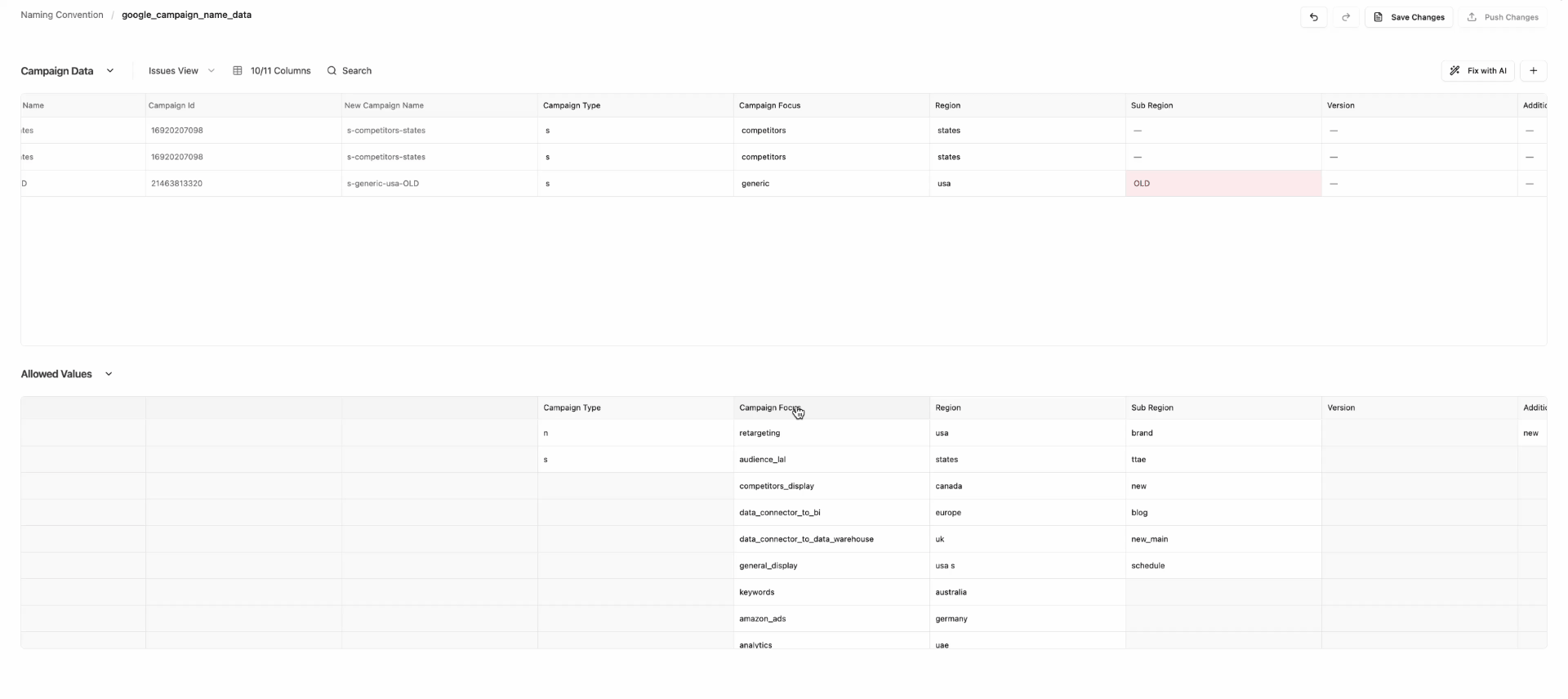Updated on
Jun 18, 2025
Naming Convention is a new product from Improvado that helps teams automatically audit, clean, and govern naming logic across data sources.
It enables consistent formatting across campaigns by splitting names into structured parts, validating allowed values, and offering AI-assisted corrections.
At its core, the system is built on two simple primitives:
By comparing your campaign data against the dictionary, the system can instantly detect naming issues. You can then fix them manually or use AI suggestions.


This contains parsed campaign name parts. The delimiter is auto-detected or user-defined. The table includes:

This is a dictionary of valid values for each part. For example:
This table is tightly linked to the Dimension Table:
As soon as a value in the Dimension Table doesn’t match its dictionary in the Allowed Values:


Once errors are identified, click Fix with AI.
Both tables are live in your warehouse and update automatically on each save. They can be joined to other tables using the Dimension ID and used in transformation logic, reporting, and dashboards.
Once you’ve cleaned and validated your naming convention, you can push the cleaned names back into source platforms like Facebook or Google Ads.
This is done via Dimension ID, so there’s no guesswork or duplication. Your naming becomes consistent not only in the database but also directly in your ad accounts.
Supported Data Sources:
Additional data source support may be added upon additional request.
Naming Convention is currently in private beta.
It’s designed for companies that want to finally take control of naming at scale, not just for QA, but as part of a broader data governance system.
If your team struggles with inconsistent naming, misaligned dashboards, or painful campaign cleanup workflows, this is the system we built for you. It gives you live validation, AI assistance, clean joins, and even pushback into ad platforms.
To get access, reach out now — we’re rolling it out gradually and onboarding partners one-on-one.
Improvado team is always happy to help with any other questions you might have! Send us an email.
Contact your Customer Success Manager or raise a request in Improvado Service Desk.